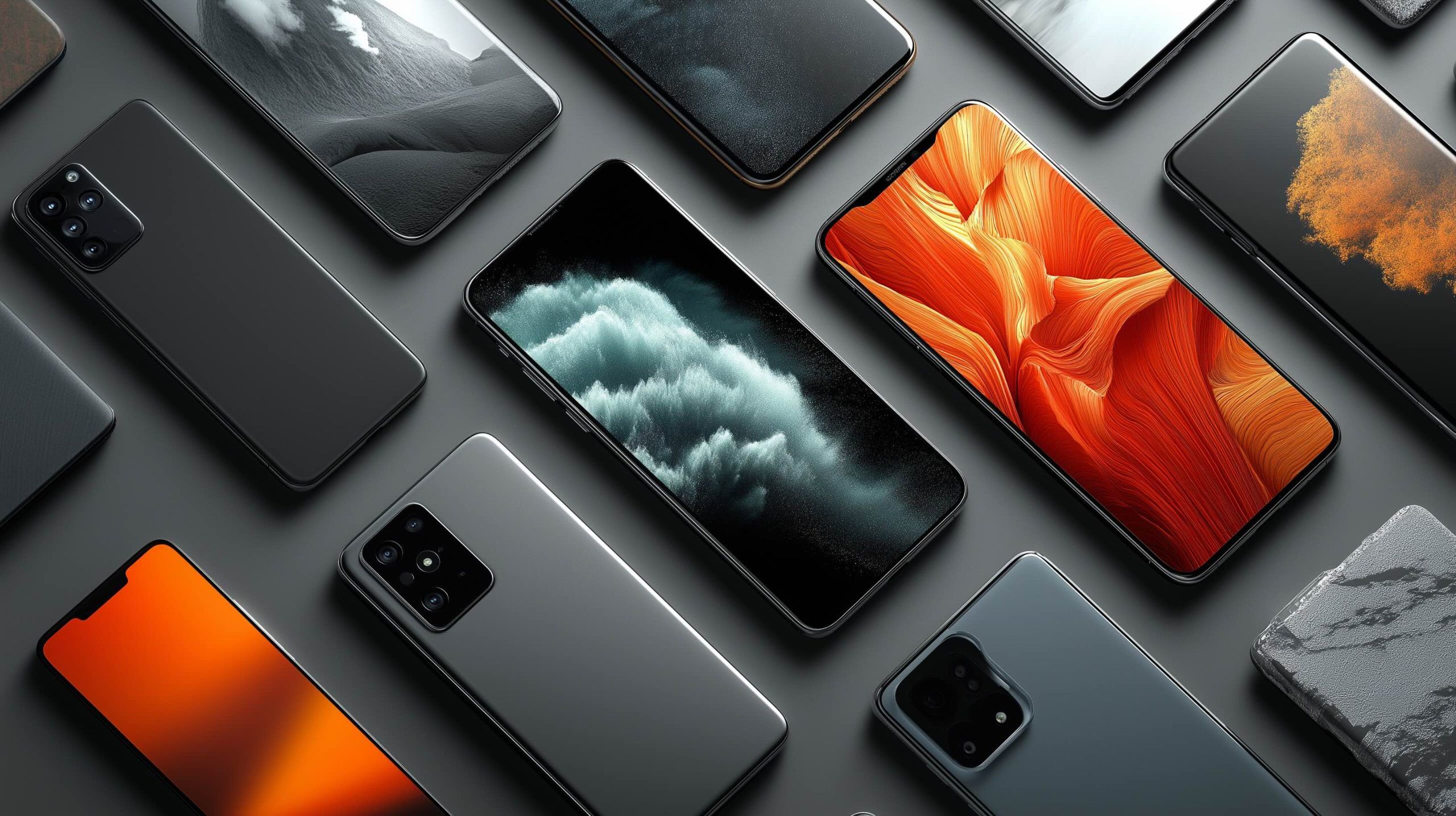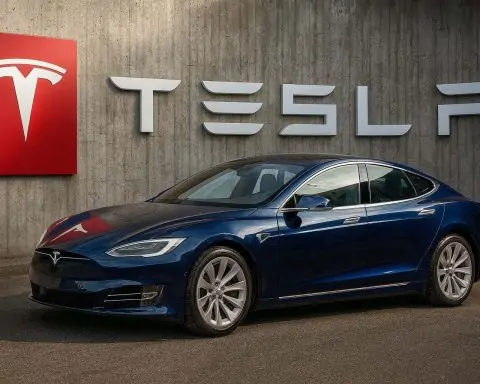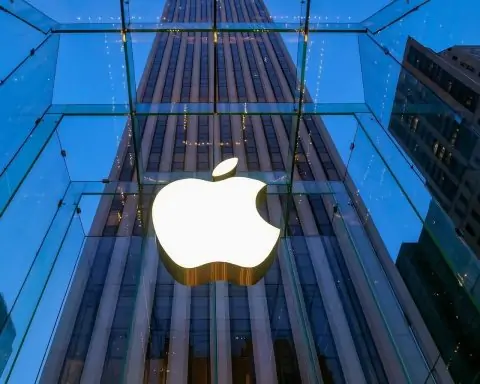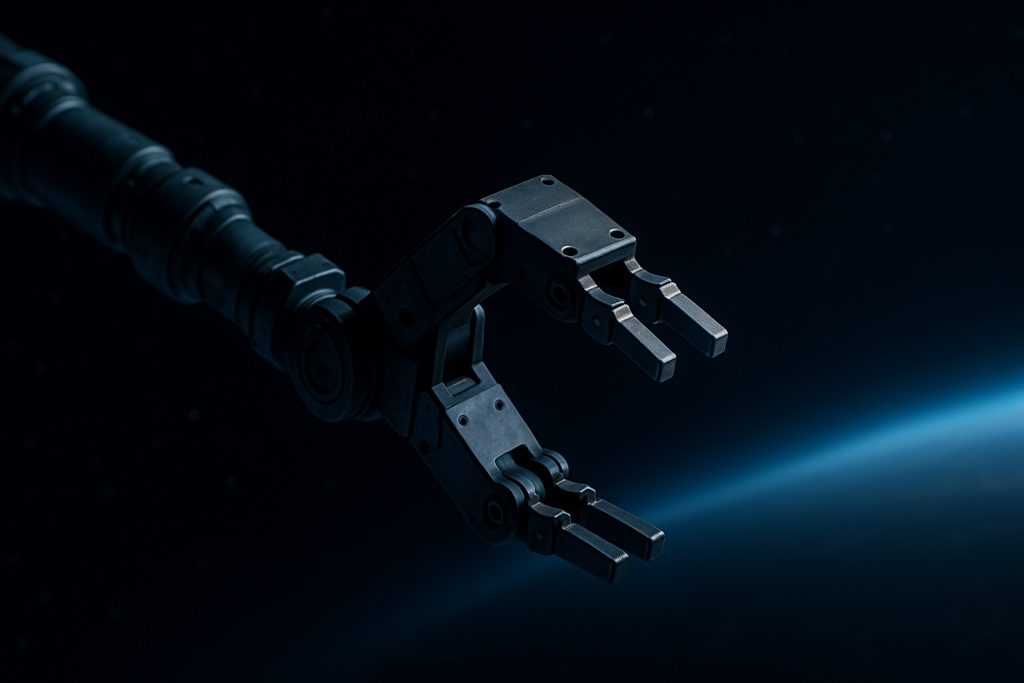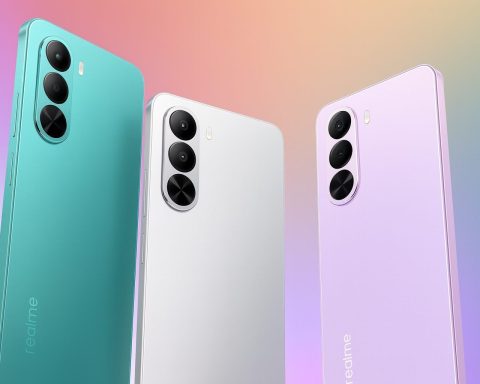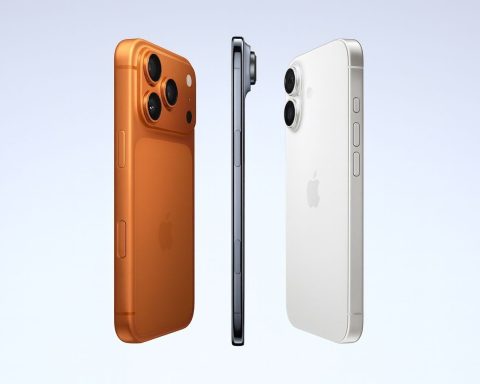- Apple’s iPhone 18 Pro, expected in 2026, is rumored to debut with under-display Face ID and a tiny camera punch-hole.
- Apple plans an all-screen iPhone by 2027, featuring edge-to-edge glass with no notch or Dynamic Island.
- In 2025, Apple’s iPhone 17 lineup is tipped to include the ultra-thin iPhone 17 Air and the high-end iPhone 17 Ultra.
- Samsung will unveil the Galaxy Z Fold 7 and Z Flip 7 at Unpacked on July 9–10, 2025, with a thinner chassis and likely no built-in S Pen.
- Honor will unveil the Magic V5 foldable in China on July 2, 2025, billed as the world’s thinnest foldable and its most powerful AI-powered model.
- Microsoft unveils Copilot+ PCs, including the Surface Pro 12-inch and Surface Laptop 13-inch, powered by Qualcomm Snapdragon X Plus with a built-in 45 TOPS NPU and ~16 hours of web use.
- Meta launches Oakley Meta smart glasses with up to 8 hours of use and 19 hours standby, 3K video, a discrete camera, and built-in AI assistant integration.
- Viture’s next-gen XR glasses will use Sony micro-OLED displays, offer a much wider field of view, and provide 6DoF tracking with onboard cameras for mixed reality.
- Nintendo Switch 2 launched on June 5, 2025, features a custom Nvidia chip with DLSS and ray tracing, an 8-inch 1080p display at 120Hz, and pre-orders have sold out.
- YouTube Shorts will add Veo 3, a text-to-video generator launching later this summer, with a likeness-protection mechanism to curb AI-generated impersonations.
Apple’s Roadmap to an All‑Screen iPhone – Leaked plans suggest Apple will gradually eliminate the iPhone’s display cutouts by 2027. The iPhone 18 Pro (expected 2026) is rumored to debut under-display Face ID with only a tiny camera punch-hole. Then, for the iPhone’s 20th anniversary in 2027, Apple aims to launch a truly “all-screen” iPhone – an edge-to-edge glass design with no notch or Dynamic Island at all. This would mark Apple’s boldest design shift since the iPhone X. In the meantime, the 2025 lineup (iPhone 17 series) may introduce a new ultra-thin “iPhone 17 Air” model (replacing the Plus) and an iPhone 17 Ultra to elevate the high end. Takeaway: Apple is iterating toward a seamless front face, betting on under-display sensor tech to finally realize a full-screen iPhone – a change that’s been a decade in the making since Face ID first necessitated a notch.
Samsung Foldables Unpacked – Thinner Designs, S Pen in Question – Samsung’s next foldable launch is looming, with an Unpacked event leaked for July 9–10 to reveal the Galaxy Z Fold 7 and Z Flip 7. Rumors point to Samsung aggressively slimming the Fold 7’s chassis, even if it means sacrificing the S Pen digitizer layer. Indeed, insiders say the Fold 7 will likely ditch built-in stylus support to shave off millimeters. That means no more directly writing on the foldable’s screen – users would need a separate S Pen device, charged externally. The trade-off could address one of the Fold’s biggest criticisms (bulk), but it disappoints power users who embraced the Fold’s notepad-like potential. Samsung faced a similar dilemma with its non-foldable flagships (the Galaxy S21 Ultra lacked an embedded pen, only to bring it back in the S22 Ultra), so this move would echo that earlier compromise. On the upside, a thinner Fold would be more pocketable – a clear priority as foldable sales have flagged, prompting Samsung to reportedly cut foldable production by up to 40% after Z Fold/Flip 6 underperformed.
- Honor’s Magic V5 Challenges Samsung: Samsung’s foldable dominance is under siege from rivals. Honor just announced it will unveil the Magic V5 foldable in China on July 2 – pointedly “designed to directly challenge” Samsung’s Galaxy Z Fold 7. Teasers boast that Magic V5 will be the world’s thinnest foldable yet, likely even slimmer than Honor’s previous-gen Magic V3 which wowed reviewers with its svelte build. Honor isn’t being coy about its target: the company is hyping V5 as a Fold 7 competitor on the eve of Samsung’s event. Beyond thinness, Honor also promises its “most powerful AI-powered foldable” to date. For consumers, more players in the foldable race means faster innovation – and Samsung’s next Fold will launch into a market where being good isn’t enough if a rival comes in thinner, lighter, or cheaper.
Microsoft Launches “Copilot+” PCs with AI on Board – Microsoft is making PCs smarter with dedicated AI silicon. The newly announced Surface Pro (12-inch) and Surface Laptop (13-inch) are branded as Copilot+ PCs, each powered by Qualcomm’s Snapdragon “X Plus” chip which includes a built-in NPU capable of 45 trillion operations per second. In practice, these Arm-based machines are 50% faster than the previous Surface generation and even claim to outpace Apple’s M3 MacBook Air in certain tasks. More importantly, the NPU unlocks a slew of Windows 11 AI features: a Copilot key on the keyboard summons the AI assistant, and new “Copilot+” experiences like intelligent search (the Recall feature), image Photos Relight editing, and “Click to Do” contextual actions run locally at low latency. This is part of Microsoft’s vision of AI-enhanced personal computing – these devices can proactively adjust settings, summarize content, or upscale images using on-device AI. With all-day battery life (~16 hours web use) and ultra-portable designs (the tablet is just 1.5 lbs), Microsoft is clearly positioning these Surfaces as the showcase for AI in PC hardware. Big picture: After years of chasing mobile chips, Windows PCs are now joining the AI silicon race that Apple’s M-series and Google’s Tensor kicked off – heralding a new generation of laptops that are “AI turbocharged” by design.
Meta’s New Oakley Smart Glasses & the AR Wearables Battle – Meta is doubling down on smart eyewear with a sporty twist. The company announced Oakley Meta smart glasses, a sunglasses-style wearable built on Oakley’s popular HSTN frame design. Unlike Meta’s Ray-Ban Stories (launched 2023), the Oakley edition is geared for active lifestyles: it boasts double the battery life (up to 8 hours use, 19 hours standby) of the latest Ray-Bans and can record video in 3K resolution – a notable jump from the 1440×1920 video on Ray-Ban models. It also uses Oakley’s Prizm polarized lenses for high-contrast, UV-protected vision, making it truly functional as sports eyewear. These glasses retain familiar features – a discrete camera in the frame with an indicator light, built-in open-ear speakers for music, and a capture button for hands-free shooting. New to the mix is Meta’s AI assistant integration: wearers can ask the glasses questions and get real-time answers (Meta highlighted use cases like checking weather or coaching tips during a run) via a paired phone. With over 2 million pairs of Meta’s Ray-Ban smart glasses sold since 2023, the company is now expanding to different styles and use-cases – cementing its lead in the nascent smart eyewear market.
- Viture’s AR Glasses up the Stakes: While Meta focuses on cameras and audio, startups are pushing toward true augmented reality. AR newcomer Viture teased its next-gen XR glasses and earned a “Best of Show” at AWE 2025 for their technical leaps. The upcoming Viture glasses will be the first to use Sony’s latest micro-OLED displays, offering a sharper, brighter image with a much wider field of view than any AR glasses to date. Impressively, they’ll support 6DoF tracking, meaning wearers’ full head and body motion is tracked for spatial AR experiences (previous consumer glasses were mostly 3DoF). In essence, Viture is promising Vision Pro-like immersion in a slim sunglasses form – complete with onboard cameras on the frame (à la Snap Spectacles or Ray-Ban) to enable mixed reality. They even plan multiple styles to suit different tastes. This signals how quickly AR wearables are advancing: Meta’s Oakleys are largely about recording and voice assistant features, whereas Viture and others are racing to bring true AR displays to everyday-looking glasses. The competition is heating up between big tech’s incremental approach and startups’ more radical innovation, inching us closer to the sci-fi vision of normal-looking AR eyewear.
Gaming Hardware Round-Up: Switch 2 Debuts, PS6 and Xbox Plans – It’s a transformative moment in gaming consoles, with new hardware on the horizon:
- Nintendo Switch 2 Launches: Nintendo’s hugely anticipated Switch 2 has arrived (launching June 5, 2025) and is a massive upgrade to the 2017 original. It features a custom Nvidia chip delivering PS4 Pro-class performance with DLSS upscaling and even ray tracing, yet in a portable form. The console sports a 120Hz-capable 8-inch 1080p display, offering far smoother visuals than the old Switch’s 720p/60 screen. Early demand is through the roof – pre-orders have sold out repeatedly (Nintendo even issued alerts warning buyers to avoid scams and inflated resellers). With a huge seven-year run behind the first Switch, this new model is poised to keep Nintendo competitive against the likes of Steam Deck and mobile gaming. Crucially, it promises to run existing Switch titles and new games with greater fidelity, which should please its massive user base.
- PlayStation 6 in the Works: Official talk of the PS6 has begun emerging. In a recent business briefing, a Sony exec hinted that the PlayStation 6 will offer a “new and enhanced way” for players to engage with the platform. While details are scarce (Sony won’t reveal too much this early), the comments suggest Sony is exploring fresh ideas beyond just a typical spec bump – possibly deeper integration of cloud or AI features, or new hardware form factors. Industry rumors point to 2027 as a likely launch window for PS6 (roughly seven years after PS5). Sony also noted console generations are stretching longer, as even PS4 retains an active user base. For now, the takeaway is that both Sony and Microsoft are in R&D for next-gen – with Microsoft execs similarly promising their next Xbox will be the “biggest technical leap ever” in console history. Gamers have a few more years of the current generation, but the horizon is coming into view.
- Xbox Embraces VR (via Meta): In a surprising crossover, Microsoft is partnering with Meta in the VR space. Leaked details reveal an “Xbox Edition” Meta Quest 3S headset is about to be released, possibly as soon as the end of June. This isn’t a full Xbox-only VR device, but rather a limited edition of Meta’s latest Quest headset bundled with Xbox gear: it comes in Xbox’s black-and-green color scheme and includes an Xbox Wireless Controller plus 3 months of Game Pass Ultimate. Priced around $399, the Quest 3S Xbox Edition will allow players to stream Xbox Cloud Gaming titles in a virtual big-screen mode. (Notably, there’s no indication yet of native VR versions of Xbox games – this is about enhancing the existing cloud play experience in VR.) Meta had confirmed back in 2024 that it was working with Microsoft on an Xbox-inspired headset, and now it’s finally materializing. For Microsoft, which has hesitated to build a dedicated Xbox VR, this partnership is a clever way to dip into virtual reality on Xbox without developing its own hardware. It gives Xbox fans a VR option via Meta’s ecosystem, and it gives Meta a new marketing angle to reach console gamers. It’s a win-win – though fans hungry for true Xbox VR games will still be waiting.
AI Browser Wars: Apple and Samsung Chase the Search Revolution – A new front is opening in the battle of web browsers and assistants, driven by generative AI:
- Apple Looks Beyond Google: Amid its trial separation from Google Search, Apple is actively exploring AI-powered search engines for its devices. In U.S. antitrust testimony, Apple’s services chief Eddy Cue revealed the company has held discussions with emerging AI search providers – including OpenAI, Anthropic, and Perplexity AI – and plans to integrate these into Safari as alternative search options. Apple even reportedly considered acquiring Perplexity outright, according to insider reports, in what would be a rare AI startup buy for the company. The goal? To bolster Siri and Safari with a chatty, smart search that could eventually rival Google’s. While Google remains the default on iPhones for now (a deal worth ~$20B/year), Apple is clearly laying groundwork for an AI search future – one where your iPhone might answer questions with an AI assistant and custom index instead of a Google results page.
- Samsung Courts Perplexity: At the same time, Samsung has been eyeing Perplexity AI as well – potentially to power a new default assistant on Galaxy phones. Insiders say Samsung was in late-stage talks to preload Perplexity’s AI assistant on upcoming Galaxy devices and deeply integrate its AI search features [1]. In fact, the plan was to make Perplexity the default AI helper on the Galaxy S26 (due in 1H 2026), replacing reliance on Google’s solution [2]. This Samsung-Perplexity deal hasn’t been formally announced, and Apple’s interest could complicate it (Perplexity suddenly looks like a prize asset in the AI race). The broader significance is that both major smartphone makers are scrambling to build AI-driven search experiences – envisioning a post-Google era where interacting with your phone means chatting with an intelligent assistant that can both find information and generate answers. It’s an arms race to control the next paradigm of search. Whether through partnership or acquisition, whoever secures the best AI search capabilities could redefine how we all find information on mobile devices.
AI Content Creation: YouTube Shorts Tap Generative Video – The short-form video arena is getting an AI upgrade. Google is rolling out a tool called Veo 3 to YouTube Shorts creators later this summer, bringing powerful text-to-video generation to the masses. Instead of filming or editing, a creator can simply type a prompt (e.g. “Show a sunset beach with lo-fi music”) and Veo 3 will automatically produce a video clip with matching visuals and even background sound. This represents a leap beyond Google’s earlier “Dream Screen” experiments – Veo 3 can generate full moving scenes with a surprisingly high production quality from just a few lines of text. For digital marketers and small creators, the implications are huge: content creation could become faster and cheaper than ever. Need a quick ad or a cutaway clip? Just describe it and let the AI do the rest – no camera crew needed.
But the ease of AI video comes with concerns. Critics worry YouTube’s feed could be flooded with auto-generated clips, making it harder for genuine human-crafted videos to stand out. There’s also the risk of low-effort or misleading content being churned out at scale. YouTube is aware of these pitfalls – the company is developing a “likeness protection” mechanism (in collaboration with Hollywood talent agencies) to prevent creators’ faces or voices from being mimicked without permission. CEO Neal Mohan has pitched Veo 3 as a way for “anyone with a voice” to reach an audience, but he also acknowledges the responsibility to ensure transparency and quality. In practice, we may soon see Shorts filled with AI-generated skits and scenes. The platform’s challenge will be managing this new content boom: embracing the creativity and accessibility gains while safeguarding against an AI content apocalypse of endless, spammy videos. For viewers, it means the line between real and AI media will blur even further – raising the bar for what counts as original content in the TikTok/Shorts era.
ChatGPT and Critical Thinking – MIT Study Sparks Debate – Is reliance on AI making us less capable thinkers? A new MIT Media Lab study has ignited controversy by suggesting exactly that. Researchers asked young adults to write essays under three conditions – one group used ChatGPT, another used a normal web Google search, and a control group used no tools. The findings were eye-opening: those using ChatGPT had the lowest brain engagement and consistently underperformed on linguistic and cognitive measures. Their essays ended up eerily similar to each other – formulaic and lacking originality (two blinded English teachers described the AI-assisted essays as “soulless”). By the third assignment, many ChatGPT users had resorted to copy-pasting AI outputs with minimal edits. Later, when asked to rewrite from memory, the ChatGPT group struggled to recall their own content, showing significantly weaker memory-related brainwave activity. In short, outsourcing their thinking to an AI seemed to cause a kind of “cognitive offloading” – the work got done, but nothing stuck in their brains.
The implications have set educators and technologists abuzz. The study (a 54-person preprint, not yet peer-reviewed) warns that heavy use of generative AI may erode critical thinking skills and long-term learning, especially in young students. The lead author even rushed it to publication out of concern that schools might hastily adopt AI (“GPT kindergarten”) without understanding the downsides. Some experts say the results aren’t surprising – if you let an AI do the thinking, you engage less deeply, much like GPS impacting our navigation skills or calculators our mental math. However, others caution against overreaction: this is an early study with a small sample, and ChatGPT might be just one factor among many affecting learning. OpenAI, for its part, has not formally responded, but the research fuels calls for guidance on healthy AI usage habits. Notably, in a meta twist, people immediately used ChatGPT to summarize the MIT paper on social media – falling into the very trap the study describes. (The author anticipated this and planted hidden “AI traps” in the text, which caused language models to mis-summarize some points [3].) The debate is just beginning: as AI tools become ubiquitous, how do we leverage them to assist creativity and productivity without atrophying our own mental muscles?
Next-Gen Noise-Canceling Headphones Break New Ground – The battle for the best silence is intensifying in 2025’s headphone market. Audio giants are rolling out headphones with smarter and more powerful noise-cancellation than ever. Case in point: Sony’s just-launched flagship WH-1000XM6 brings an array of technical innovations. It introduces a new HD Noise Canceling Processor QN3 that’s seven times faster than the previous chip, plus an expanded system of 12 microphones (50% more than before) to sense ambient noise. The result is dramatically improved active noise canceling that adapts in real time with far greater precision. Sony claims the XM6 can hush everything from airplane droning to cafe chatter noticeably better than its XM5 predecessor. It also added “Scene-Based Listening” modes that auto-adjust ANC and transparency based on your activity – for example, dialing up ambient sound when you start walking on a city street. Not to be outdone, Bose’s QuietComfort Ultra (launched late 2024) has won accolades for its own cutting-edge noise suppression and personalized audio tuning. Together, these models show how noise-canceling tech is evolving: stronger processing, more mics, and AI-driven algorithms are being leveraged to create an oasis of quiet for the listener. Even at lower price tiers, brands are adopting hybrid ANC systems and machine learning to cancel noise more effectively (while preserving sound quality). For consumers, it means headphones are getting better at isolating us from the world – whether on a noisy commute or a busy office – and the bar for “quiet” has been raised yet again. As innovation continues, the gap between premium models like Sony/Bose and last-gen headphones becomes stark, ushering in a new golden era for audiophiles seeking solitude in sound.
Below are all the news items referenced when preparing the report, grouped by topic and outlet.
| Topic | Outlet | Headline | Author | Date |
|---|---|---|---|---|
| Apple / iPhone Roadmap | Axios | Apple Is Under Pressure to Deliver a Hit iPhone | Ina Fried | Jun 23 2025 |
| TechRadar | iPhone 17 Pro Again Tipped to Get a Vapor Chamber – Here’s Why That’d Be a Big Deal | James Rogerson | Jun 23 2025 | |
| Forbes | Exactly When Apple Will Launch iPhone 17, iPhone 17 Air and iPhone 17 Pro | David Phelan | Jun 17 2025 | |
| CNET | Ready to Buy a New iPhone? Here’s Why You Should Wait | Abrar Al-Heeti | Jun 18 2025 | |
| MacRumors | iPhone Reportedly Moving to All-Screen Design in Two Stages | Joe Rossignol | Jun 23 2025 | |
| Wccftech | Apple’s Vision to Bring an “All-Screen” iPhone to the Masses Will Take an Estimated Half a Decade to Fulfill | Omar Sohail | Jun 23 2025 | |
| PhoneArena | With iPhone 18, Apple Will Continue Its Streak of Losing Its Identity | Abdullah Asim | Jun 19 2025 | |
| CNET | iPhone 20 Rumors Point to All-Glass “Waterfall” Screen and Anniversary-Inspired Name | Nelson Aguilar | Jun 21 2025 | |
| Samsung / Foldables & S Pen | 9to5Google | Why I’m Excited for the Galaxy Z Fold 7, and Not Just Because It’s Thin | Ben Schoon | Jun 22 2025 |
| Engadget | What to Expect at the Next Samsung Galaxy Unpacked | Anna Washenko | Jun 20 2025 | |
| SamMobile | Galaxy Z Flip 7 and Flip 7 FE Leak Reveals New Exotic Color | — | Jun 23 2025 | |
| CNBC | Samsung Aims to Catch Up to Chinese Rivals for Thin Foldable Phones as Apple Said to Enter the Fray | Arjun Kharpal | Jun 19 2025 | |
| SamMobile | Galaxy S27 Ultra May Mark the End of the Built-In S Pen Slot | — | Jun 23 2025 | |
| Sammy Fans | Galaxy S27 Ultra Might Repeat S21 Ultra’s Biggest S Pen Flaw | — | Jun 22 2025 | |
| T3 | Samsung Galaxy S27 Could Signal the End of a Long Hardware Tradition | Sam Cross | Jun 23 2025 | |
| Honor / Magic V5 | Notebookcheck | Magic V5: Honor Officially Reveals Oppo Find N5-Surpassing Dimensions with Samsung Galaxy Z Fold 7 Looming | Alex Alderson | Jun 22 2025 |
| GSMArena | Honor Magic V5 Hands-On Photos Surface Along With Key Specs | — | Jun 23 2025 | |
| PhoneArena | Honor Reveals Magic V5 Foldable Phone’s Thickness, and It Barely Beats the Galaxy Z Fold 7 | Abdullah Asim | Jun 22 2025 | |
| Android Authority | This Upcoming Galaxy Z Fold 7 Rival Is Thinner Than a Pack of Gum | Hadlee Simons | Jun 23 2025 | |
| Microsoft / Copilot+ PCs | Notebookcheck | Finally a Silent Snapdragon 2-in-1 – Microsoft Surface Pro 12 Review | Andreas Osthoff | Jun 22 2025 |
| Microsoft UK Stories | Microsoft’s Big Baking Challenge Serves Up Sweet Treats With the Help of Surface Copilot+ PCs | — | Jun 17 2025 | |
| Lowyat.NET | Microsoft Surface Copilot+ PCs Deliver Smarter Work and Seamless Performance in 2025 | — | Jun 23 2025 | |
| GB News | More Affordable Copilot+ PCs Are Now Available in UK, With Windows 11 Features You Can’t Get Elsewhere | Aaron Brown | Jun 21 2025 | |
| Meta & AR Glasses | CNBC | Meta, EssilorLuxottica Unveil Oakley Smart Glasses | Jonathan Vanian | Jun 20 2025 |
| Meta Store (press) | Introducing Oakley Meta Glasses, a New Category of Performance AI Glasses | — | Jun 20 2025 | |
| Reuters | Meta Partners With Sports Eyewear Brand Oakley to Launch AI-Powered Glasses | — | Jun 20 2025 | |
| Tom’s Guide | I Tested Viture’s Next-Gen AR Glasses, and My Eyes Couldn’t Believe What They Saw | Jason England | Jun 23 2025 | |
| AI Browser & Perplexity | Engadget | Perplexity’s AI-Powered Browser Opens Up to Select Windows Users | Jackson Chen | Jun 22 2025 |
| Hindustan Times | Perplexity Launches Its AI Browser for Windows Users, Android Version Incoming | Ijaj Khan | Jun 23 2025 | |
| Mezha.Media | Perplexity’s Comet AI Browser Will Soon Be Available for Windows and Android Users | — | Jun 23 2025 | |
| StartupNews.fyi | Perplexity’s AI Browser Comet Coming to Windows Soon, Says CEO | — | Jun 23 2025 | |
| Reuters | Apple Executives Held Internal Talks About Buying Perplexity | — | Jun 21 2025 | |
| PYMNTS | Apple Reportedly Mulling Perplexity Purchase to Bolster AI Offerings | — | Jun 23 2025 | |
| Nintendo Switch 2 | Eurogamer | Nintendo Switch 2: The Digital Foundry Hardware Review | Oliver Mackenzie, Richard Leadbetter & John Linneman | Jun 21 2025 |
| The Verge | The Nintendo Switch 2 Is an Awesome Upgrade for Parents Like Me | Sean Hollister | Jun 21 2025 | |
| TechRadar | After Owning a Nintendo Switch 2 for Two Weeks, Here Are Five Reasons I’ll Never Go Back to My Switch OLED | Rhys Wood | Jun 22 2025 | |
| The Shortcut | Nintendo Switch 2 Restock: It’ll Be in Stock This Week at Walmart | Matt Swider | Jun 22 2025 | |
| Tom’s Guide | Nintendo Switch 2 Restocks Live — Walmart Drop Confirm This Week and Latest Update | Rory Mellon & Jeff Parsons | Jun 23 2025 | |
| Sony / PS6 & Xbox Collaboration | Rude Baguette | “Next-Gen Is Coming”: Sony President Drops First Official PS6 Statement | — | Jun 23 2025 |
| GAMINGbible | PlayStation 6 Tease Confirms It’s Closer Than We’d Have Liked | Olly Smith | Jun 21 2025 | |
| Engadget | Xbox’s VR Headset With Meta Could Be Released Sooner Than We Thought | Jackson Chen | Jun 21 2025 | |
| PCMag | Report: Xbox-Branded Meta Quest 3S Could Land Next Week | Will Mccurdy | Jun 22 2025 | |
| ChatGPT & Cognitive Impact | The Conversation | MIT Researchers Say Using ChatGPT Can Rot Your Brain. The Truth Is a Little More Complicated | Rebecca L. Marrone & Vitomir Kovanović | Jun 23 2025 |
| Time Magazine | ChatGPT’s Impact on Our Brains According to an MIT Study | Andrew Chow | Jun 17 2025 | |
| The Hill | ChatGPT Use Linked to Cognitive Decline: MIT Research | Rachel Scully | Jun 20 2025 | |
| WSJ (Opinion) | AI’s Biggest Threat: Young People Who Can’t Think | Allysia Finley | Jun 22 2025 | |
| YouTube Shorts & Veo 3 | Gizmodo | YouTube Will Add an AI Slop Button Thanks to Google’s Veo 3 | James Pero | Jun 21 2025 |
| Engadget | Google Is Adding the Veo 3 Video Generator to YouTube to Slopify Shorts | Lawrence Bonk | Jun 19 2025 | |
| The Hollywood Reporter | YouTube to Add Google’s Veo 3 to Shorts in Move That Could Turbocharge AI on the Video Platform | Alex Weprin | Jun 19 2025 |
References
1. www.pymnts.com, 2. www.pymnts.com, 3. time.com
